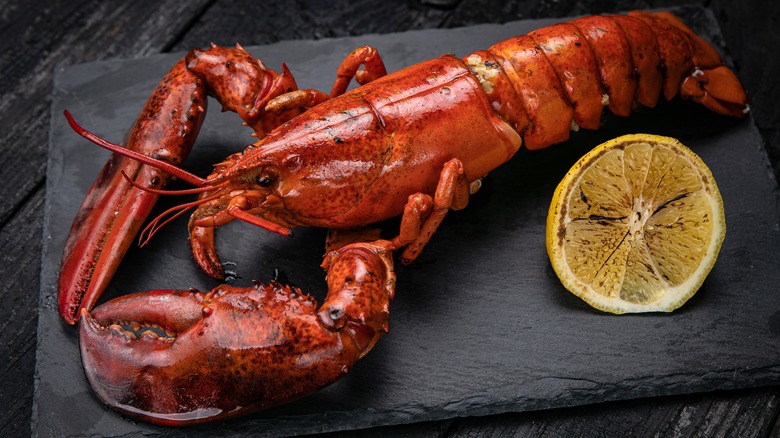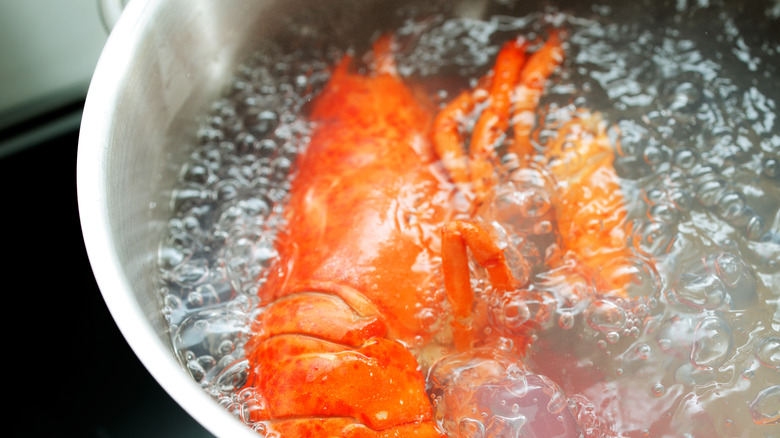The Last Thing To Do With Lobster Shells Before Throwing Them Away
Tragically, some of the best parts of seafood are parts people often discard. Believe it or not, once you eat the meat out of your lobster, it can still provide the foundation for another meal entirely, and it's all about the shell.
Just think about all that elusive stuck-on meat remaining on the insides of the lobster shell once you've finished picking it "clean." Hit it with some hot water and you're nobody's fool — not an ounce (or a penny) is going to waste on your watch. Lobsters are considered a luxury food for a reason. At NYC's Fulton Fish Market, 1 ¼ pound live lobsters go for $38.99 each. For comparison, beef porterhouse steak costs $19.99 per pound at Whole Foods in Brooklyn. Get the most out of your money and hold onto that shell!
In the same way you'd repurpose a steak bone or chicken trimmings, put your cleaned-out lobster shells to good use and whip up gravy or stock. For greater convenience, you can even stash that bad boy right in the freezer for later use if you don't have time to whip up a slow-simmered stick right now (or if you're just a little burned out on lobster from the meaty meal you just ate yesterday). Alternatively, when it comes to making lobster gravy from the shell, there's no prolonged simmer necessary. You can be chowing down on lobster gravy and cheddar bay biscuits in less than an hour.
Keep the brine time rolling
To make lobster gravy, simply toss that lobster shell in a stock pot with water, a thickening agent, and whatever spices you prefer. A simple bouquet garni would work well here, or you could also add peppercorns, olive oil, brandy, star anise, and fennel. In all, it'll take about two hours from start to finish, and you've got a flavorful gravy to pour over a lobster pot pie. Use it to top eggs benedict for breakfast, then use it again for to top a flank steak for dinner.
It's a similar process for making lobster stock. Just toss the shell in a stockpot and hit it with a low and slow simmer. Anywhere from two hours to overnight is the sweet spot. The longer you simmer, the more flavorful your stock will be. Better Than Bouillon makes a lobster base, but you can get everything you need from some celery, carrots, garlic, and onion. Or, add a spoonful of the bouillon base to amp up the flavor.
This stuff is perfect for making lobster bisque or lobster-corn chowder. It also makes a sophisticated hydrating liquid for a rich risotto. Cook your pasta in it for lobster mac and cheese, or use it for your next bouillabaisse.

